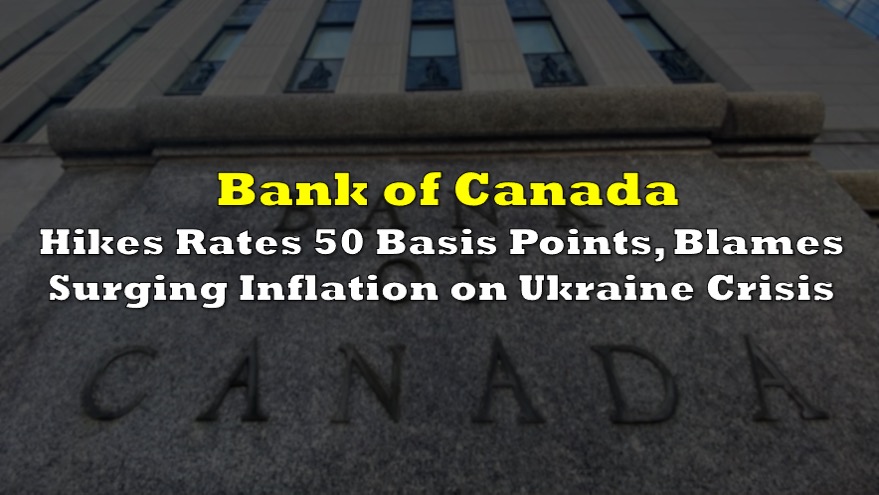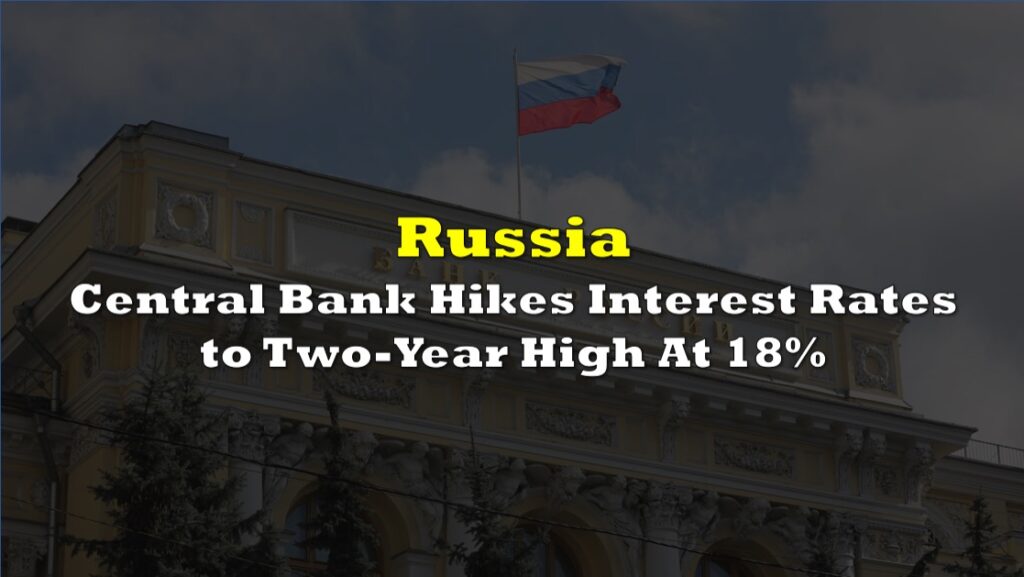In an effort to play catch-up with runaway price pressures, the Bank of Canada continued hawkish monetary policy, raising interest rates by 50 basis points during its latest policy meeting on Wednesday.
Bank of Canada raises by 50 bp and announces end of bond purchases. In other news man tries to bolt stable door after horse has bolted.
— Mark Thompson (@METhompson72) April 13, 2022
These central bankers are so far behind the curve they cannot see it.#inflation
Canada’s central bank hiked its overnight rate to 1% and announced it will embark on quantitative tightening and start shedding its ballooning balance sheet come April 25. Having finally acknowledged that its motto of preserving “the value of money by keeping inflation low and stable” no longer reflects the current economic landscape (we hate to be the bearer of bad news, but it hasn’t reflected the economic landscape since the beginning of 2021— but we digress), policy makers laid all the blame on the crisis in Ukraine, and subsequent jump in commodity and energy prices.

“Price spikes in oil, natural gas and other commodities are adding to inflation around the world,” the Bank of Canada wrote, adding that “supply disruptions resulting from the war are also exacerbating ongoing supply constraints and weighing on activity. These factors are the primary drivers of a substantial upward revision to the Bank’s outlook for inflation in Canada.” No, it certainly isn’t the colossal and unprecedented amount of quantitative easing and money printing that sent inflation rates through the roof— that would be absurd!
Commodity prices up 50%, real estate up 38%, and 3 of 4 Bank of Canada measurements show consumer prices inflation above target.
— Pierre Poilievre (@PierrePoilievre) May 2, 2021
What’s the government’s solution?
Print more money. pic.twitter.com/PTzJulRmjG
In line with the current eye-watering CPI reading of 5.7%, the central bank acknowledged that price pressures have indeed broadened, as core inflation ticks higher. CPI is now forecast to average a whooping 6% in the first half of 2022, and remain substantially above the bank’s control range throughout the remainder of the year. Come the second half of 2023, inflation is expected to subside to around 2.5%, before falling within the target range the following year. However, the path to recovery may not be as straightforward, because policy makers were quick to point out that expectations of elevated inflation are at an increased risk of becoming entrenched. Great.
The Bank of Canada warned that demand is substantially beginning to exceed supply, as businesses grapple with a tight labour market and subsequently are passing higher input costs onto consumers. The country’s economy is now forecast to expand 4.25% this year before slowing to 3.25% and 2.25% in 2023 and 2024, respectively. Uh-oh. Does that sound like stagflation? No worries, just blame Putin!
Information for this briefing was found via the Bank of Canada. The author has no securities or affiliations related to this organization. Not a recommendation to buy or sell. Always do additional research and consult a professional before purchasing a security. The author holds no licenses.









